10 Mar Appalachian Art Adventure: Dezzy Moon’s Exhibition Celebrates Her Work Study Experience
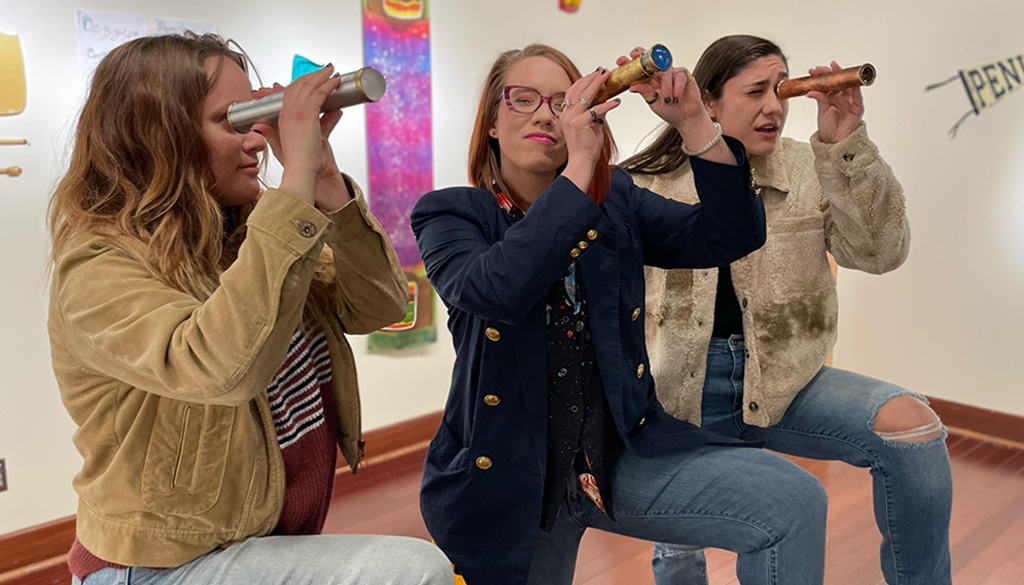
Dezzy, in the middle, and her friends journey into another universe with kaleidoscopes made in Scott Cole’s class.
The Folk School’s Work Study program offers a unique opportunity to learn, volunteer, and participate in the Folk School community for an extended period. For six to eight weeks, Work Study students spend half their session weeks taking classes and half working in service of the Folk School. They contribute primarily to garden and grounds projects, with occasional support for the dining hall, programs, and events. It’s a popular program attracting folks of all ages interested in immersing themselves into the Folk School’s special community and learning a variety of skills and crafts.
For Dezzy Moon, last summer kicked off an “Appalachian Art Adventure:” she participated in three Work Study programs back to back, starting with our friends at Arrowmont in Gatlinburg, TN, then Penland near Spruce Pine, NC, and ending the season here at John C. Campbell Folk School. Earlier this year, Dezzy’s enriching and enlivening travels and her beautiful, handmade crafts came together in an exhibition at her alma mater, the University of Alabama in Huntsville. It was an incredible show, and we wanted to hear more from Dezzy about how it all came together!
Read our interview to learn more about Dezzy’s “Craft School Experience” exhibition and her time as a Work Study student at John C. Campbell Folk School. Interested in the program yourself? Our 2023 Work Study Program applications are due Monday, March 20, 2023. Apply today!
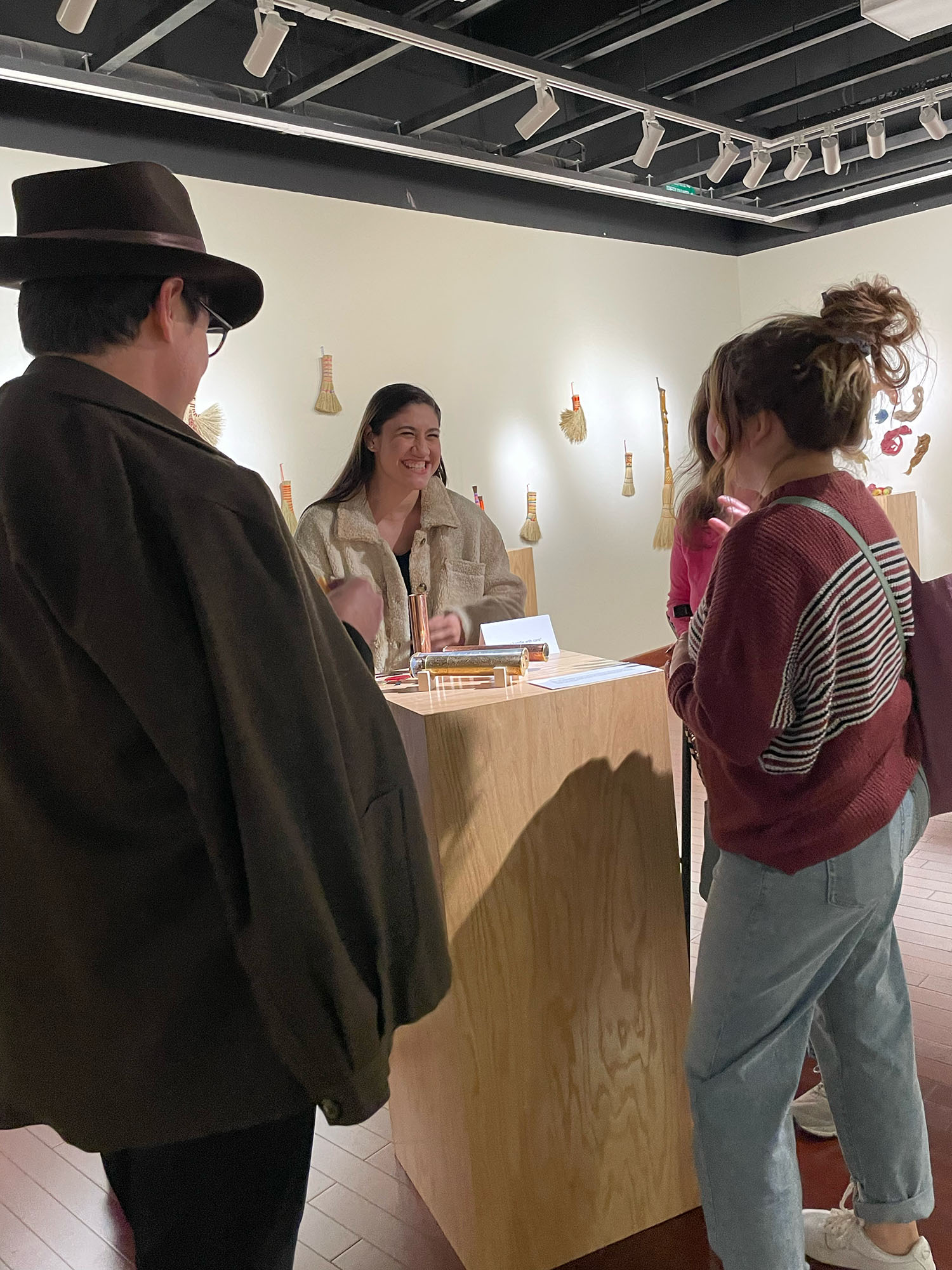
Enjoying the closing reception of Craft School Experience
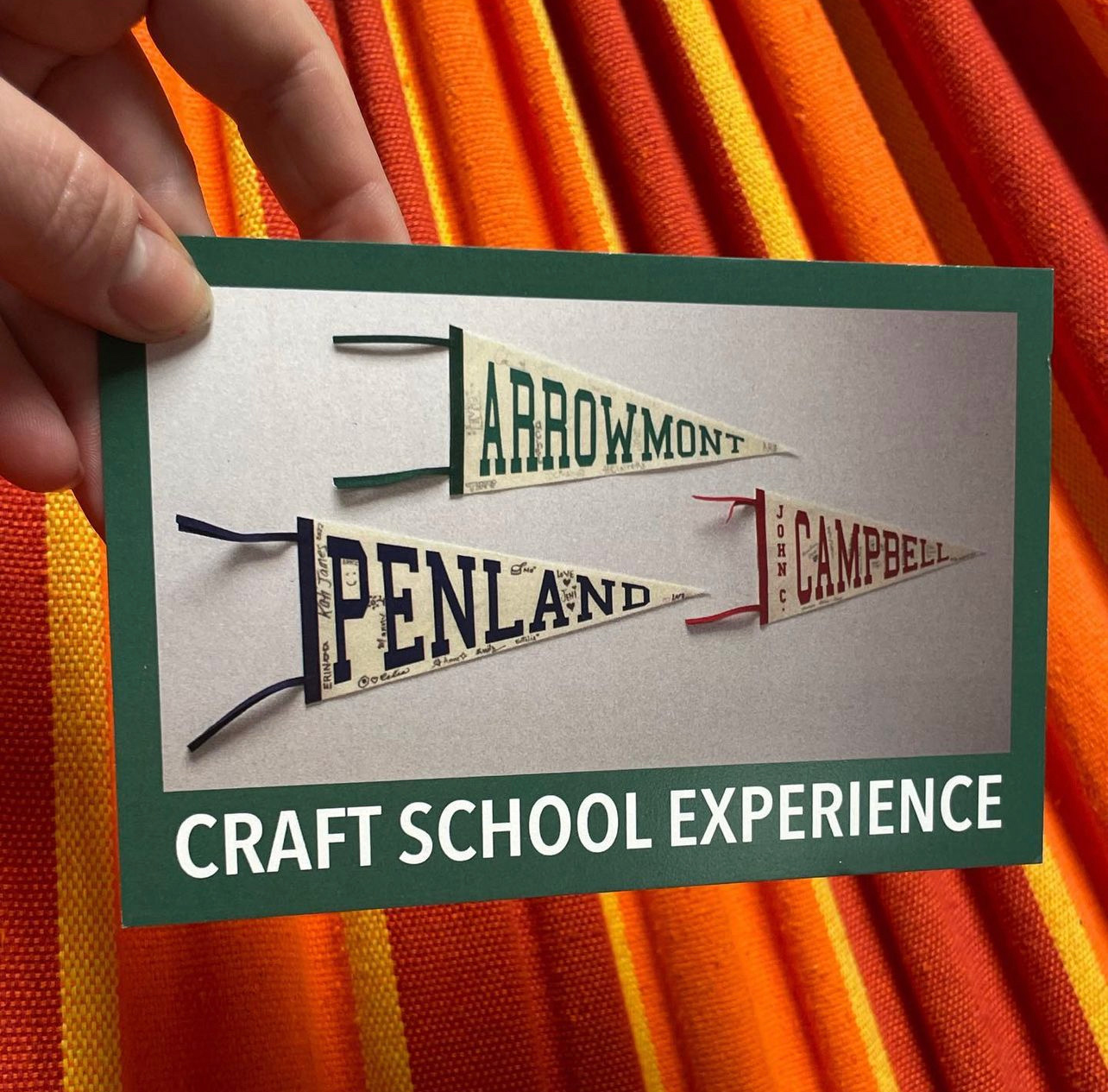
Postcard advertising Dezzy’s exhibition, Craft School Experience
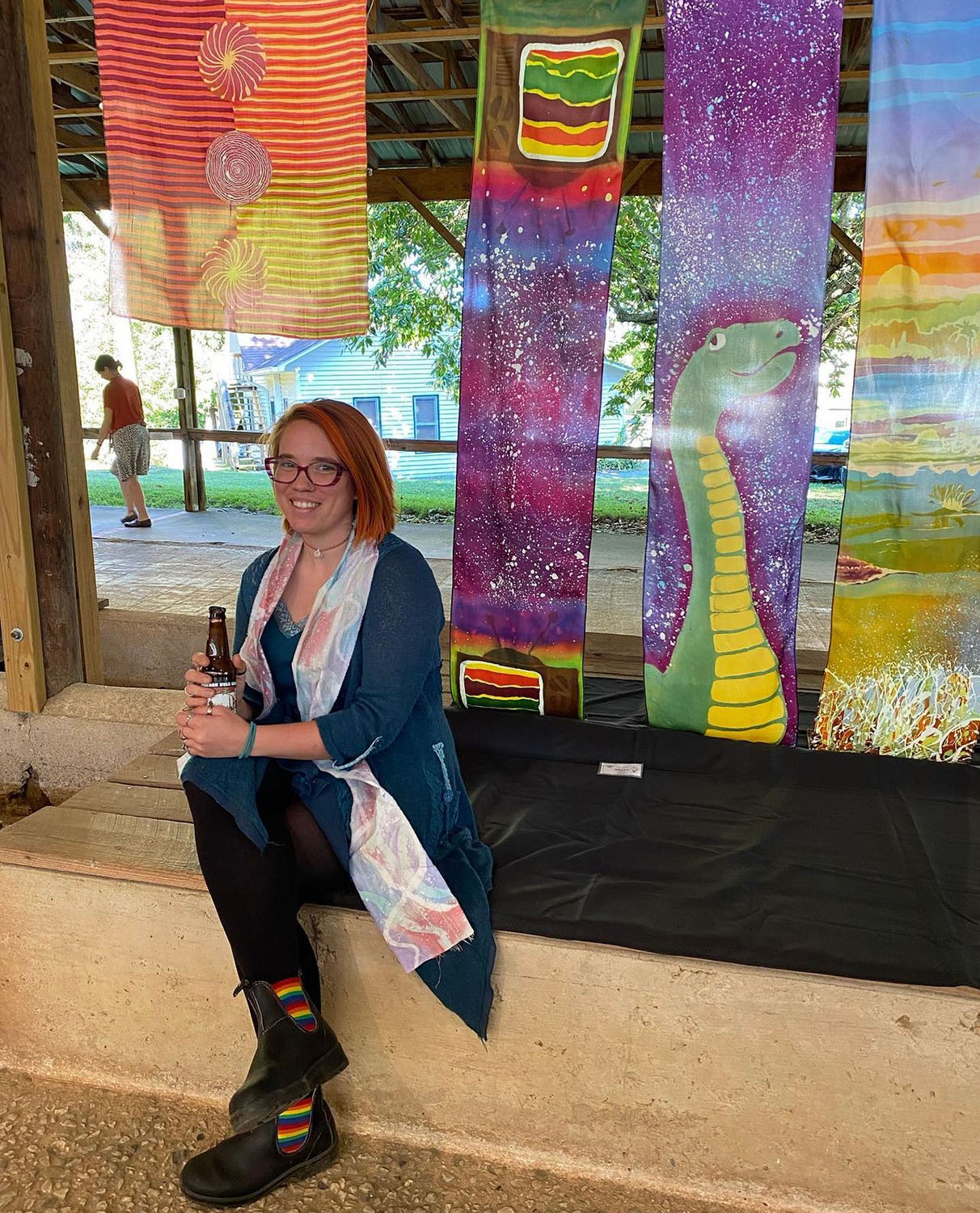
Dezzy at Closing Ceremony, sitting with work made in Mary Edna Fraser’s Surface Design class, “Mapping Your Personal Landscape”
RG: First off, congratulations on your exhibition! How did this show come about?
DM: This exhibition was all about my journey as a Work Study at Arrowmont, Penland, and the John C. Campbell Folk School last summer. About halfway through my “Appalachian Art Adventure,” the gallery coordinator for my alma mater contacted me to ask if I would like to have a show in January. I have a bad habit of waiting until just about the last minute to start on a show when I have one. I made jokes to my friends back home that I would start on the show in November, because I was out of town on my craft school journey until October and would then be traveling again for a skating half marathon. I thought about this in a panic for a day or two, then realized that I was making work every day at these schools and the show could come together pretty quickly.
RG: Did you plan to do these Work Study sessions back to back? What was the inspiration for this creative adventure?
DM: I tried my best to line up as many creative opportunities as possible. While I was in college, my plan was always to travel around a bit during the summer after I graduated. As I got closer to finishing, this became a more defined goal. I wanted to have a Work Study journey to allow me the ability to explore a variety of crafts in order to figure out which media served my practice best. This was so that I could make a more informed decision as to where to go for graduate school in the future.
RG: Did you always imagine this journey coalescing into an exhibition?
DM: I did not. Had Ilene not asked if I wanted a show, I would have never used this work to apply for one. I do see this as a complete and well-executed exhibition; however, I feel that being at an educational institution was the only situation in which it would work. As I began thinking about this exhibition, I really loved the idea of bringing more awareness about the world of craft and folk schools to the students from my college.
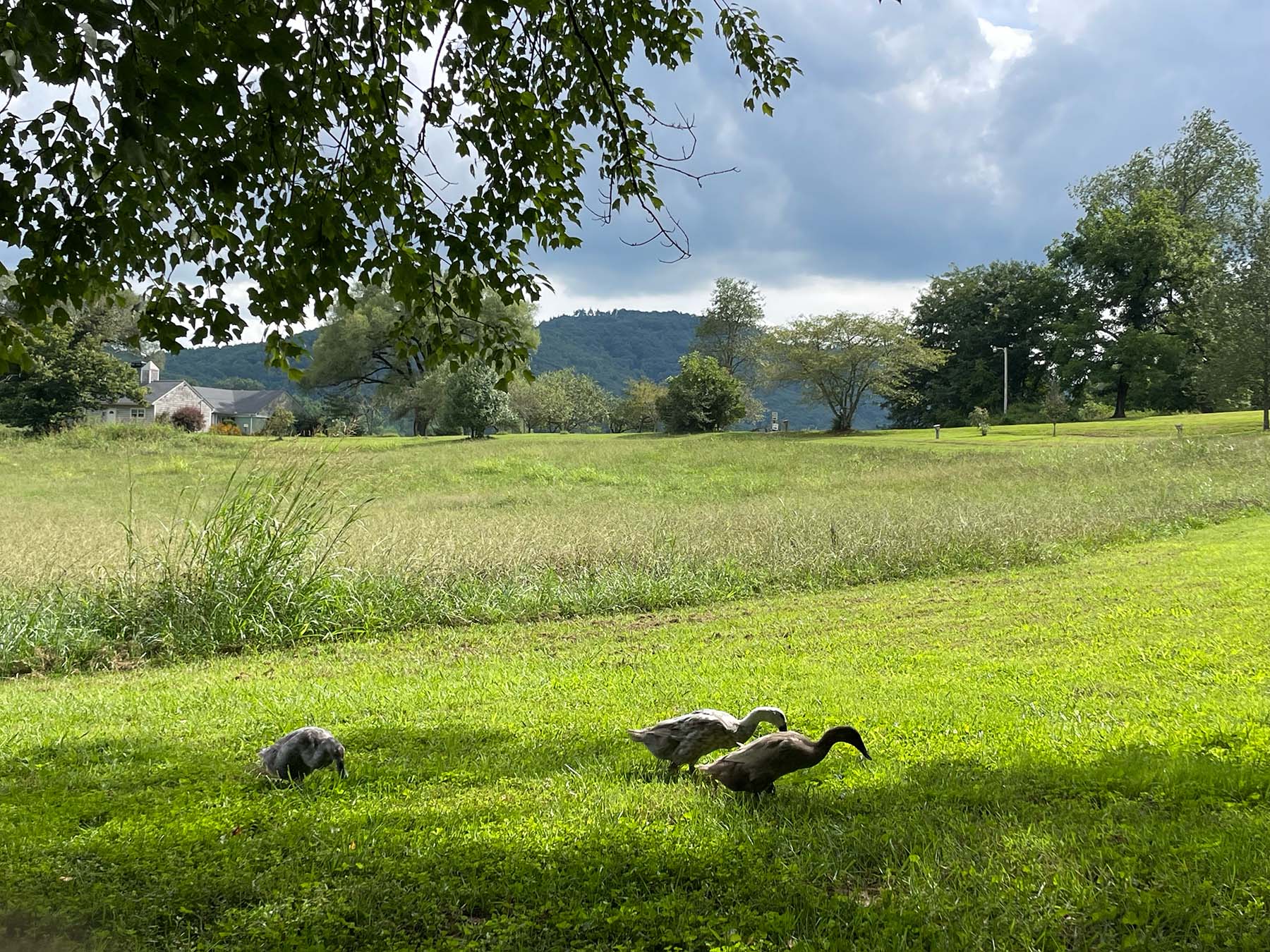
Ducks in the garden, captured by Dezzy
RG: What was something that surprised you about John C. Campbell when you first arrived?
DM: I tend not to do much research into these programs when I apply. I see a situation where I can work for room, board, and craft education, and I just dive straight in. The size of the campus was surprising. I loved being able to sit outside of Bidstrup and see fields and mountains. I was also surprised by the age range of John C. Campbell Folk School students. As a young artist and maker, seeing people who still had the drive and passion to be creative later in life was so inspirational.
RG: What classes did you take while you were a Work Study here?
DM: Scottish Besoms and Brooms with Mark Hendry, Rainbow in a Hurry with Martha Owen, A Reflection on the Universe with Scott Cole, Let’s Turn Some Great Gifts! with Steve Cook, and Mapping Your Personal Landscape with Mary Edna Fraser.
RG: What was one of your favorite memories from your time as a Work Study?
DM: There are so many, and it is so hard for me to put them into words. I really loved that there was always music at John C. Campbell, whether it was a class practicing, a community dance, Happy Clappy, or one of the Friday night concerts. As my time as a Work Study there came to a close, I was sad that I would not be surrounded by live music at all times.
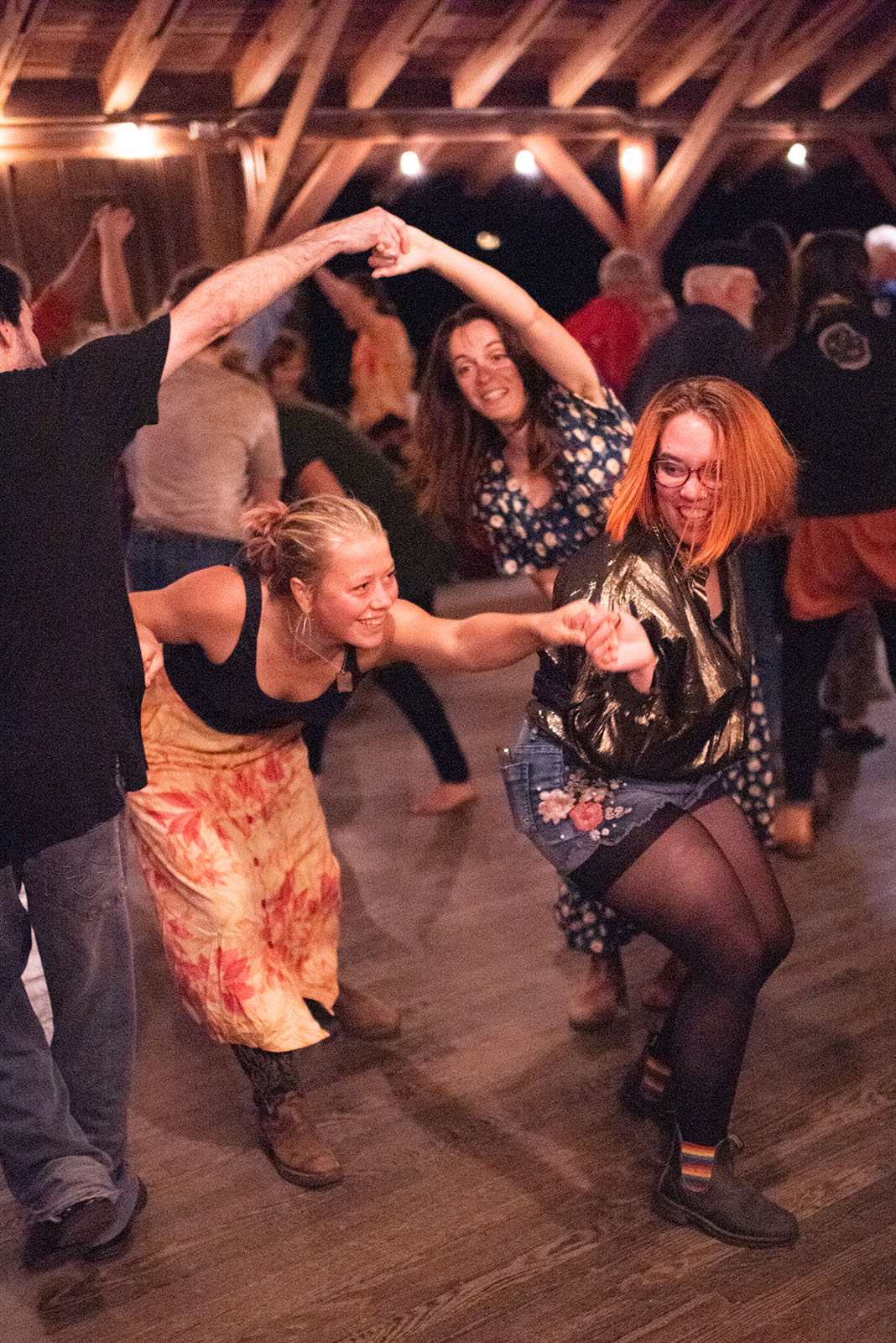
Dezzy at one of our Community Tuesday Dance and Social nights
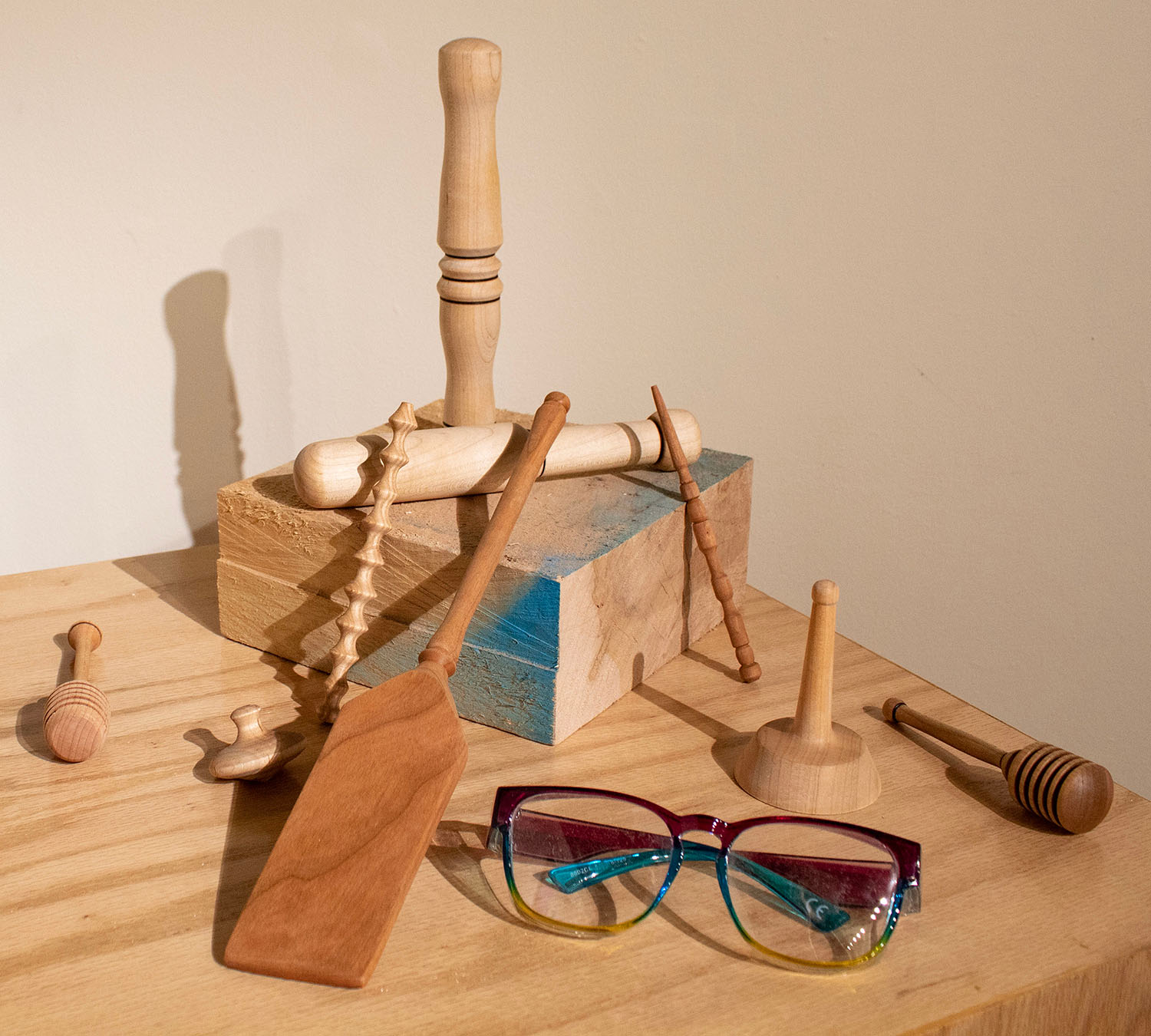
Dezzy’s woodturned objects made in “Let’s Turn Some Great Gifts!” with Steve Cook
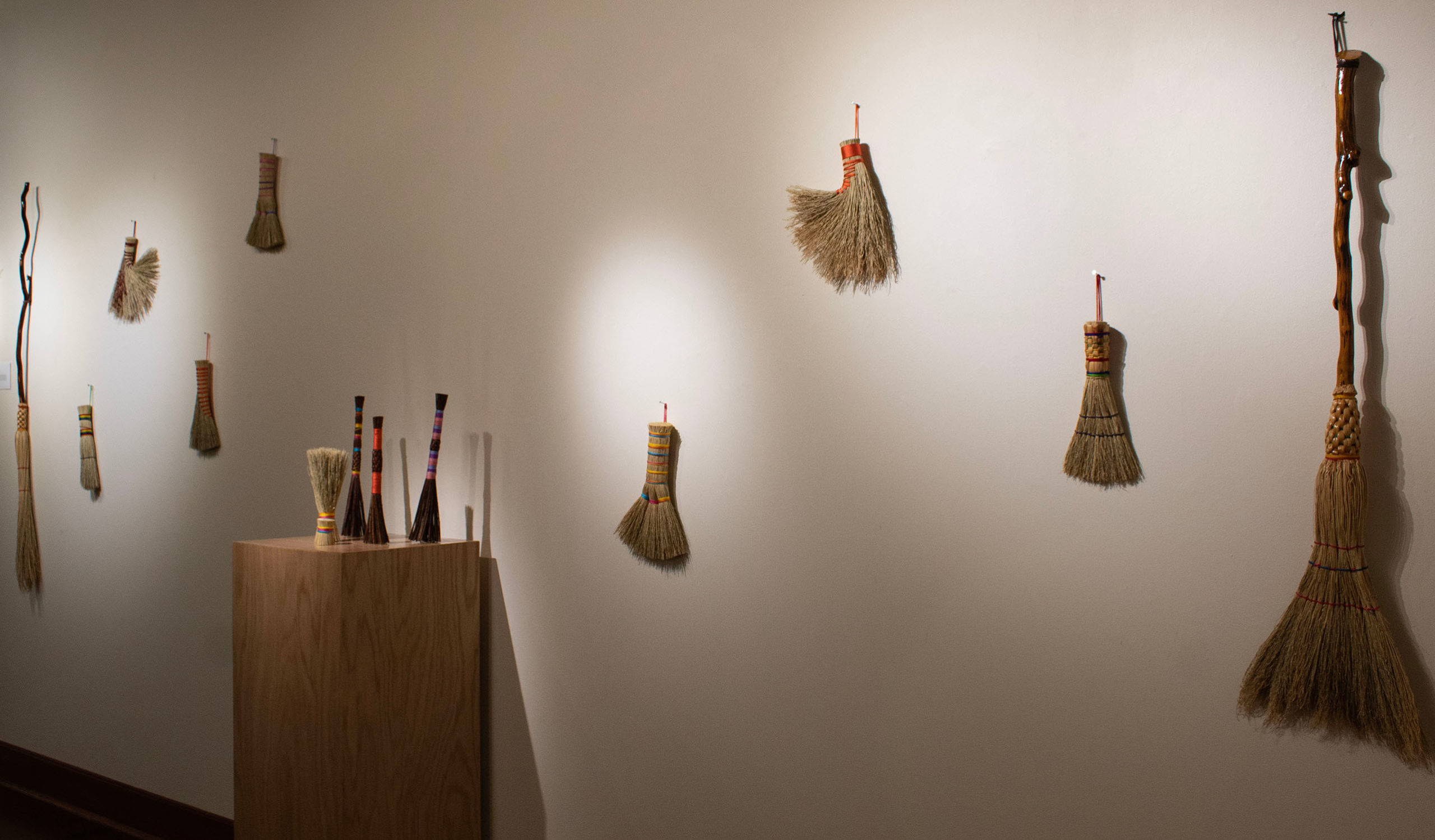
Some brooms made in Mark Hendry’s “Scottish Besoms and Brooms” class on display
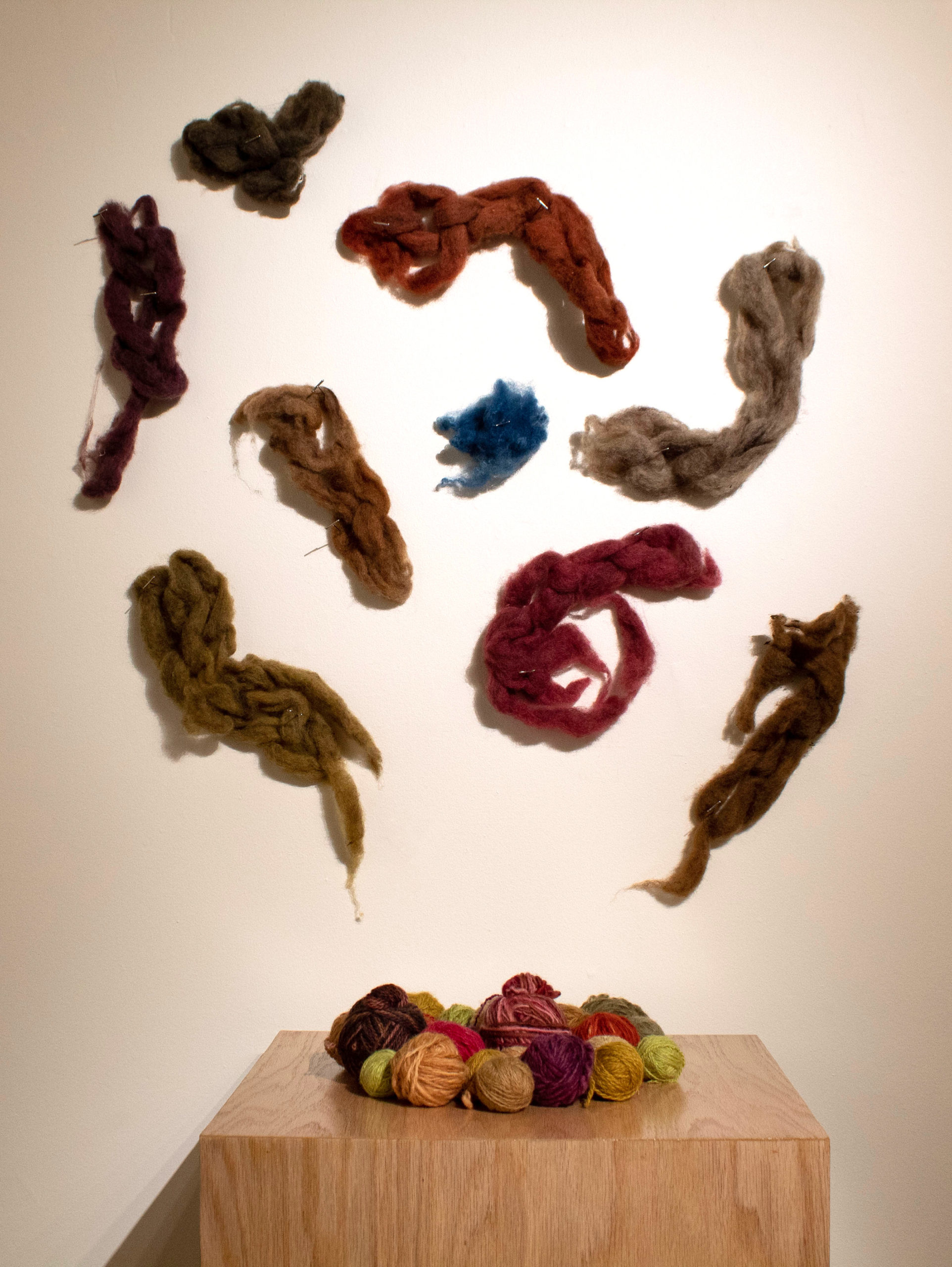
Yarn that Dezzy made in “Rainbow in a Hurry” with Martha Owen
RG: Can you describe what was on display in your show?
DM: This exhibition was incredibly varied in comparison with others I’ve had in the past. I had examples of everything I learned in nine workshops over the course of four months.
RG: We love the kaleidoscopes you made here! Can you tell us more about that class?
DM: These were probably my favorite things I made during my trip. This was also one of the most difficult workshops I’ve ever taken. The class was great, and my instructor, Scott Cole, was wonderful.
RG: You had a closing reception celebrating the exhibition recently. What was the response like during the evening?
DM: The response was amazing. All of my solo exhibitions have happened post-Covid so I’ve not had a typical reception until this show. All of my friends, my family, and even some of my favorite instructors came to the show. I have felt supported in my artistic career over the years, but this was a new level for me.
RG: That’s wonderful! One last question–What advice do you have for someone who’s looking to apply for the John C. Campbell Folk School Work Study program?
Just do it. It’s a magical experience. Do it, learn a lot, and soak in as much of the community events as you can.
About Our Work Study Program
The Work Study program offers a unique opportunity to learn, volunteer, and participate in the Folk School community for an extended period. Sessions last 6-8 weeks. Most participants spend work weeks contributing primarily on garden and grounds projects with occasional support given to the dining hall, programs, and events. Participants spend half their session weeks taking classes and half working in service of the Folk School. Work Study students have roommates and share a house with up to 10 session participants. Locally based participants may choose to reside in their home and commute. There are many ways Work Study students immerse themselves in the community through dances, concerts, Brasstown carving, demos, and other social gatherings.
Applications for July-Dec 2023 Work Study sessions are open now through March 20, 2023. The application is available on Slideroom, apply using the link below!
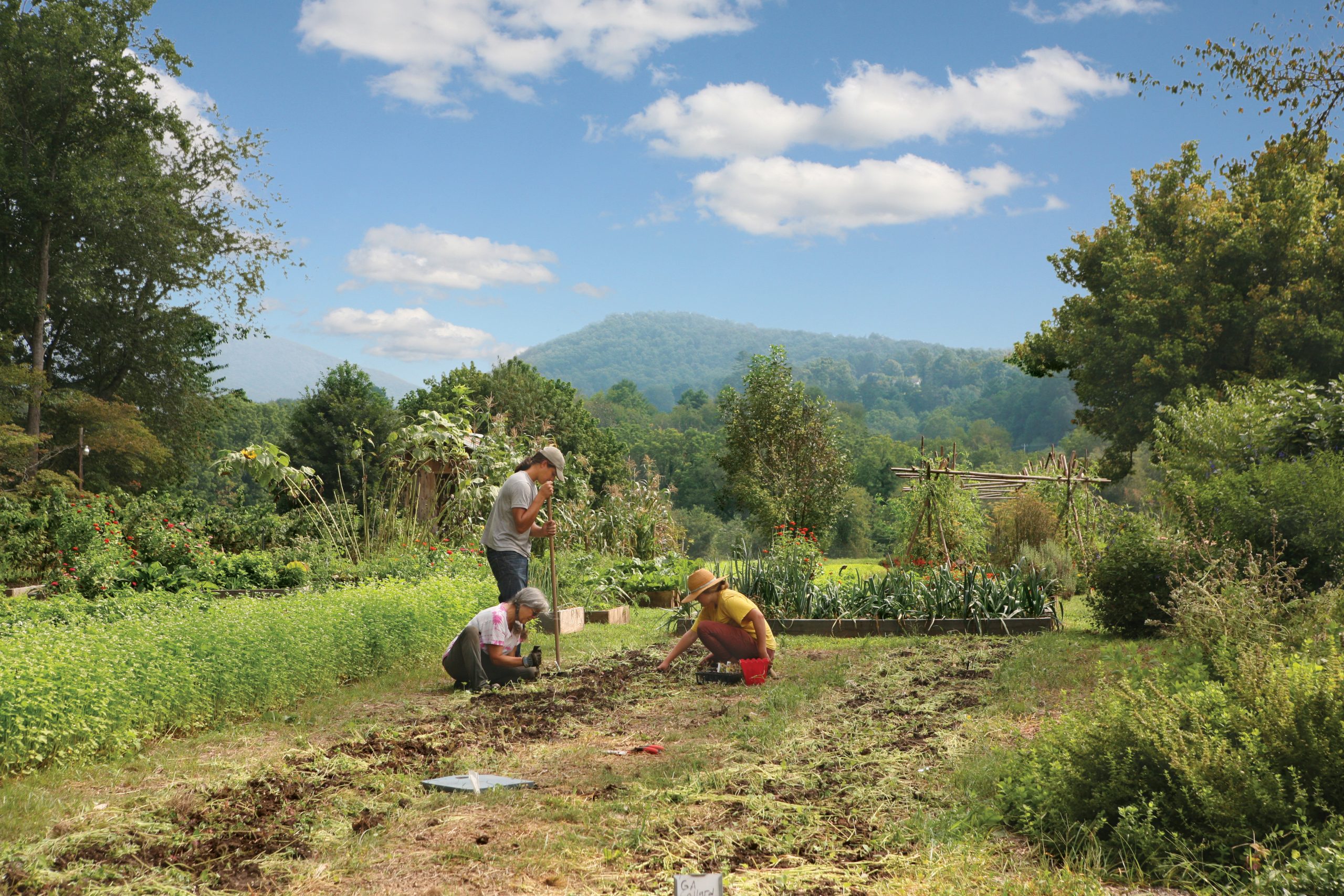



No Comments